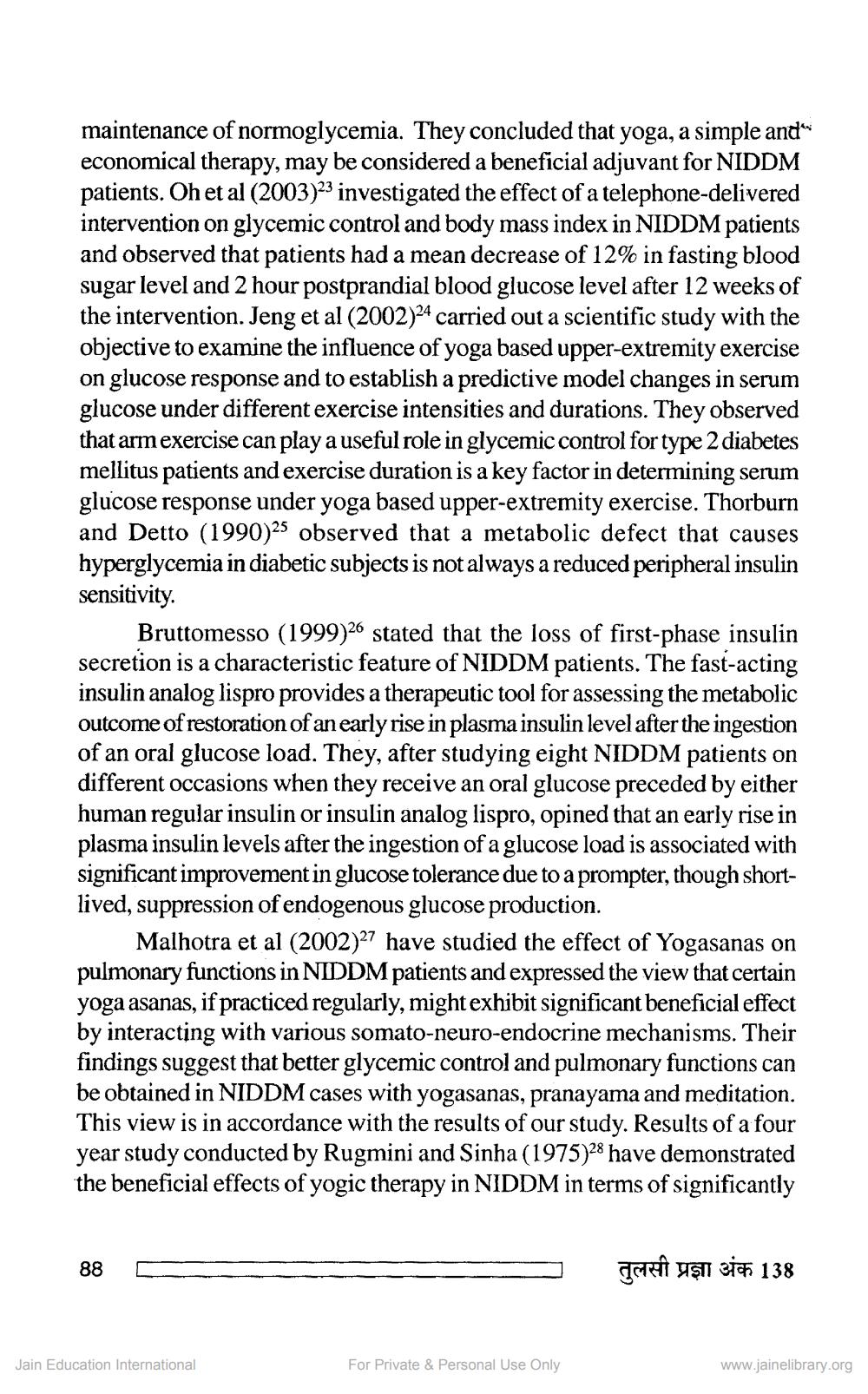________________
maintenance of normoglycemia. They concluded that yoga, a simple and" economical therapy, may be considered a beneficial adjuvant for NIDDM patients. Oh et al (2003)23 investigated the effect of a telephone-delivered intervention on glycemic control and body mass index in NIDDM patients and observed that patients had a mean decrease of 12% in fasting blood sugar level and 2 hour postprandial blood glucose level after 12 weeks of the intervention. Jeng et al (2002)24 carried out a scientific study with the objective to examine the influence of yoga based upper-extremity exercise on glucose response and to establish a predictive model changes in serum glucose under different exercise intensities and durations. They observed that arm exercise can play a useful role in glycemic control for type 2 diabetes mellitus patients and exercise duration is a key factor in determining serum glucose response under yoga based upper-extremity exercise. Thorburn and Detto (1990)25 observed that a metabolic defect that causes hyperglycemia in diabetic subjects is not always a reduced peripheral insulin sensitivity
Bruttomesso (1999)26 stated that the loss of first-phase insulin secretion is a characteristic feature of NIDDM patients. The fast-acting insulin analog lispro provides a therapeutic tool for assessing the metabolic outcome of restoration of an early rise in plasma insulin level after the ingestion of an oral glucose load. They, after studying eight NIDDM patients on different occasions when they receive an oral glucose preceded by either human regular insulin or insulin analog lispro, opined that an early rise in plasma insulin levels after the ingestion of a glucose load is associated with significant improvement in glucose tolerance due to a prompter, though shortlived, suppression of endogenous glucose production.
Malhotra et al (2002)27 have studied the effect of Yogasanas on pulmonary functions in NIDDM patients and expressed the view that certain yoga asanas, if practiced regularly, might exhibit significant beneficial effect by interacting with various somato-neuro-endocrine mechanisms. Their findings suggest that better glycemic control and pulmonary functions can be obtained in NIDDM cases with yogasanas, pranayama and meditation. This view is in accordance with the results of our study. Results of a four year study conducted by Rugmini and Sinha (1975)28 have demonstrated the beneficial effects of yogic therapy in NIDDM in terms of significantly
88
C
que uşi Bith 138
Jain Education International
For Private & Personal Use Only
www.jainelibrary.org




